I flew on a 38-year-old Boeing 757 used as a 'testbed' and saw how it's ushering in the next era of tech to help stop the rise in pilot error-related incidents

Flying on Honeywell Aerospace's Boeing 757 testbed aircraft.Thomas Pallini/Insider
- Honeywell Aerospace is one of the leading aviation firms developing the safety technology of the future.
- Its largest aircraft, a Boeing 757, tests everything from weather radar to brand-new engines.
- The tech being developed by Honeywell and tested by the aircraft could've avoided recent near misses and can save lives.
On July 7, 2017, a routine Air Canada flight from Toronto to San Francisco nearly ended in disaster when the Airbus A320 almost landed on a taxiway instead of a runway.
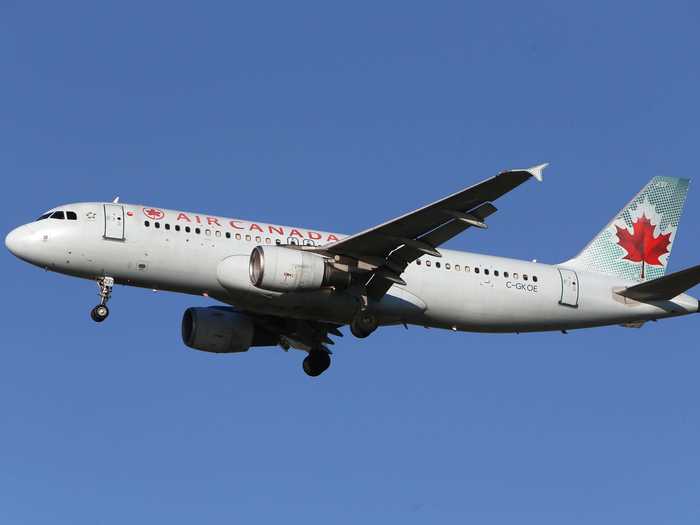
An Air Canada Airbus A320 airplane prepares to land at Vancouver's international airport in Richmond,
Reuters
A total of four aircraft were on the taxiway and thousands of lives were in jeopardy. Many potential incidents still come down to pilot error, despite massive strides in aircraft technology.
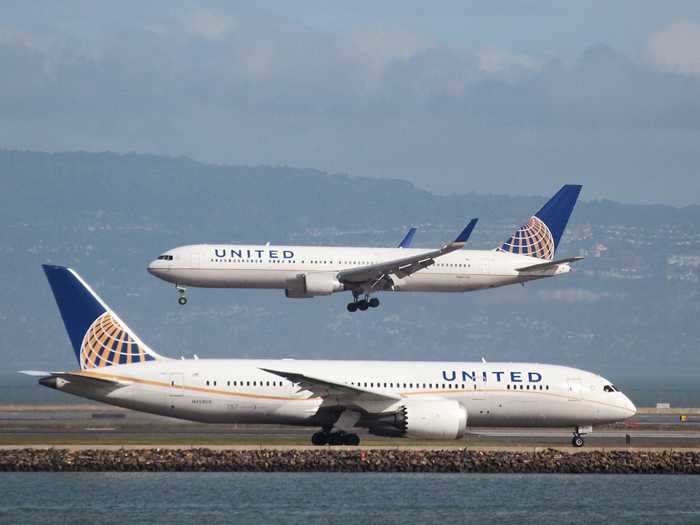
A United Airlines 787 taxis as a United Airlines 767 lands at San Francisco International Airport, San Francisco
Reuters
Honeywell Aerospace is one of the companies trying to stop such incidents by increasing automation in the cockpit and developing new technology to aid pilots. One such system is "SmartLanding and Smart Runway," part of Honeywell's "Runway Awareness and Advisory System," or RAAS.
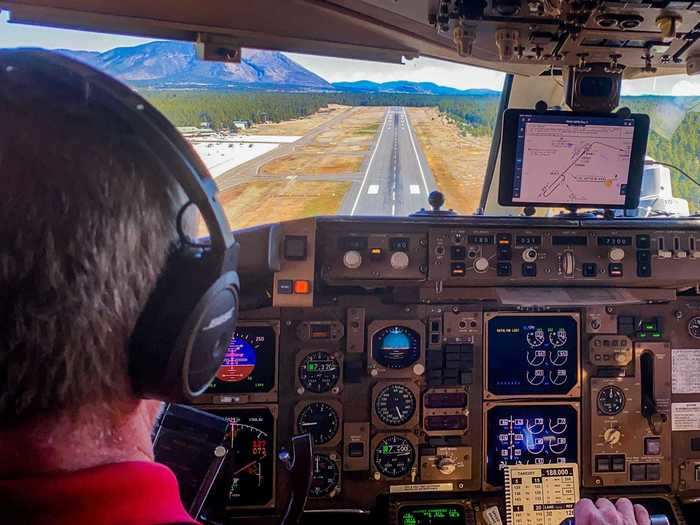
Flying on Honeywell Aerospace's Boeing 757 testbed aircraft.
Thomas Pallini/Insider
The system recognizes which runway, or taxiway, a pilot is aiming for even when the aircraft is miles away from the airport.
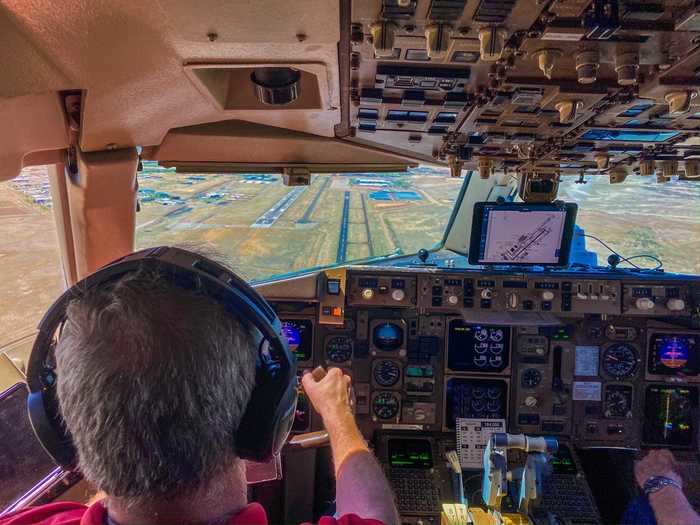
Flying on Honeywell Aerospace's Boeing 757 testbed aircraft.
Thomas Pallini/Insider
After engineers create the program, hours of actual flight time are required to test it in real-world conditions. I rode along on Honeywell's Boeing 757 flying "testbed" to see the technology in action.
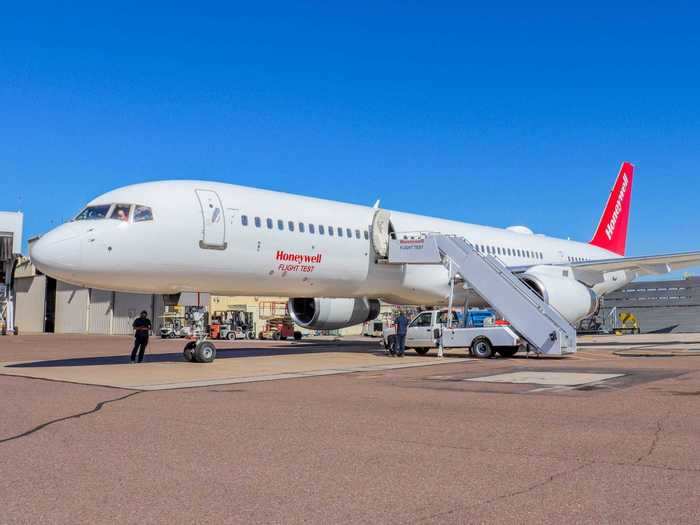
Flying on Honeywell Aerospace's Boeing 757 testbed aircraft.
Thomas Pallini/Insider
This Boeing 757 is the largest aircraft in Honeywell's ever-growing fleet of testbed aircraft.
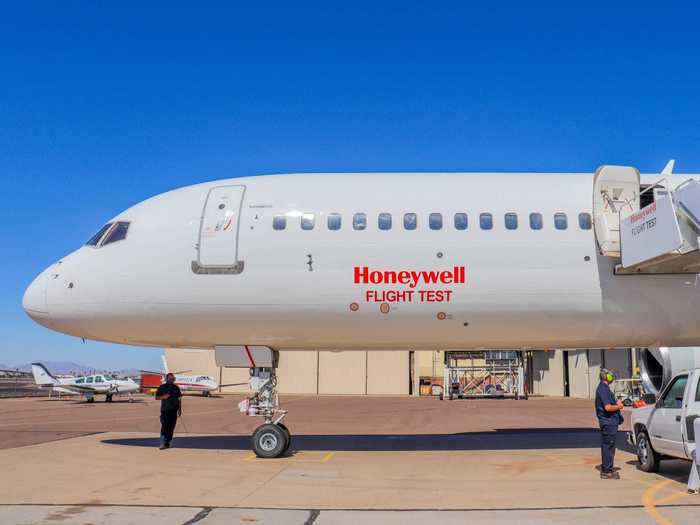
Flying on Honeywell Aerospace's Boeing 757 testbed aircraft.
Thomas Pallini/Insider
The 38-year-old plane started its life as an airliner flying for Eastern Airlines and found its way to Honeywell in 2005 for a second life.
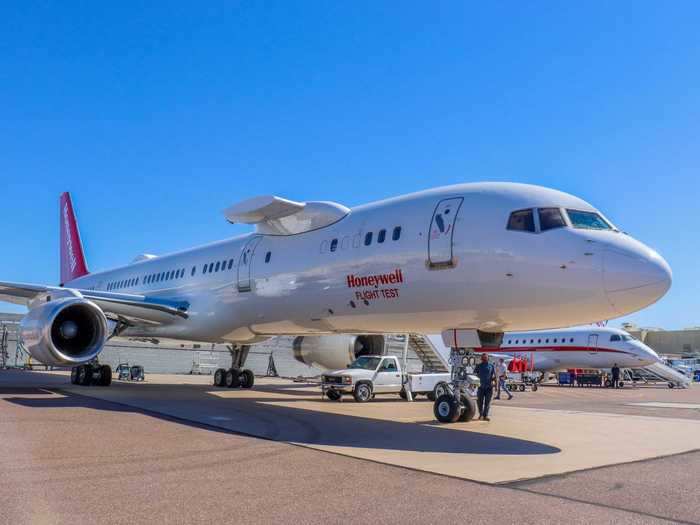
Flying on Honeywell Aerospace's Boeing 757 testbed aircraft.
Thomas Pallini/Insider
A variety of Honeywell technology is tested onboard the aircraft that's contributed to greater levels of safety in the aviation industry. Weather radar, in-flight WiFi, traffic collision and avoidance, ADS-B, and data link systems are just a few of what this aircraft tests.
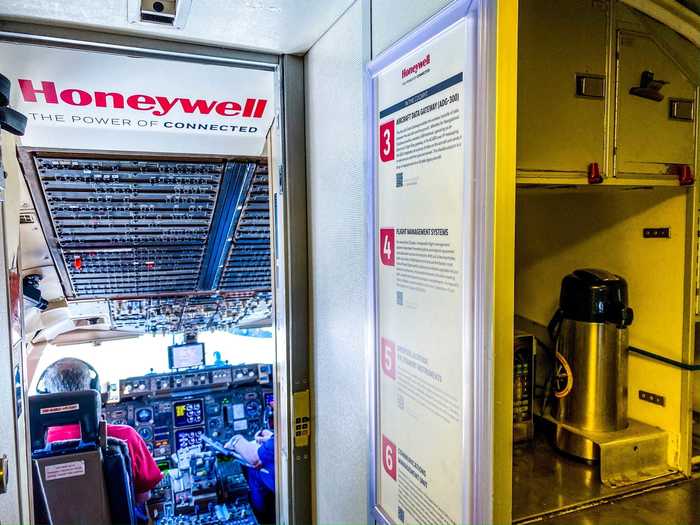
Flying on Honeywell Aerospace's Boeing 757 testbed aircraft.
Thomas Pallini/Insider
This plane can also test new aircraft engines. A mount of the side of the fuselage holds the engine while systems inside the plane monitor its performance during flight.
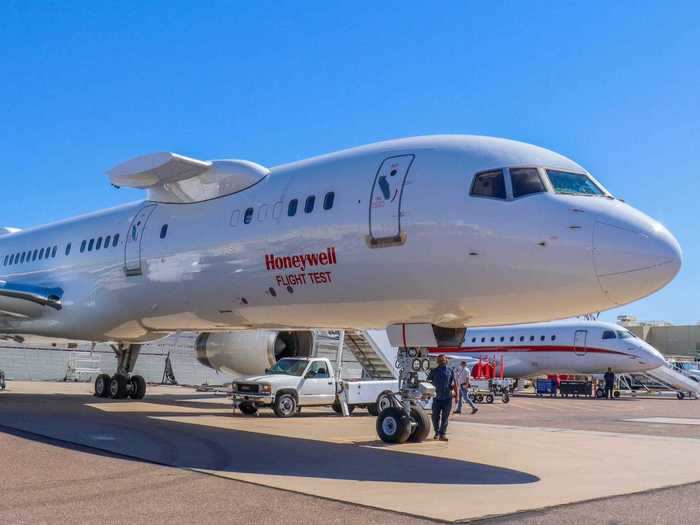
Flying on Honeywell Aerospace's Boeing 757 testbed aircraft.
Thomas Pallini/Insider
Engines with thrust levels as great as 16,500 pounds can be tested on the aircraft. Each engine manufacturer has its own testbed aircraft for this very purpose.
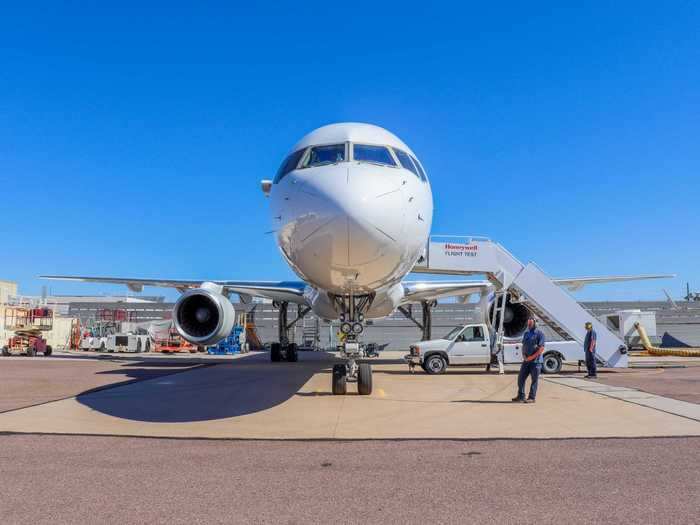
Flying on Honeywell Aerospace's Boeing 757 testbed aircraft.
Thomas Pallini/Insider
A safety briefing is conducting before each flight where the pilots and onboard engineers will review the plan for each flight, including what is to be tested and which maneuvers will be performed in the process.
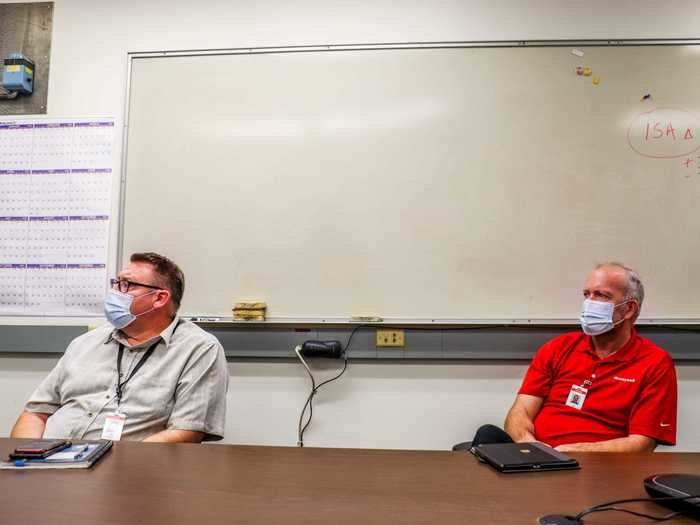
Flying on Honeywell Aerospace's Boeing 757 testbed aircraft.
Thomas Pallini/Insider
Our flight was going to be testing the Smart Runway and Smart Landing system at two airports in Northern Arizona: Flagstaff Pulliam Airport and Prescott Regional Airport.
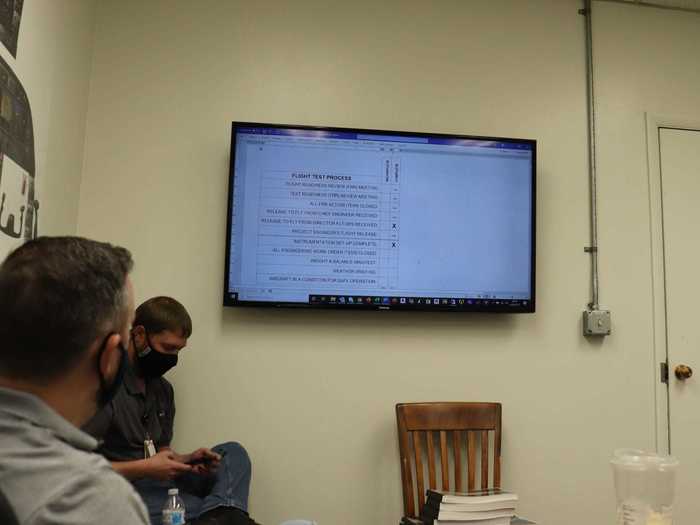
Flying on Honeywell Aerospace's Boeing 757 testbed aircraft.
Thomas Pallini/Insider
The plan was to test the system by making four approaches in total, each intentionally unstable or to an incorrect runway to see how the system would respond.
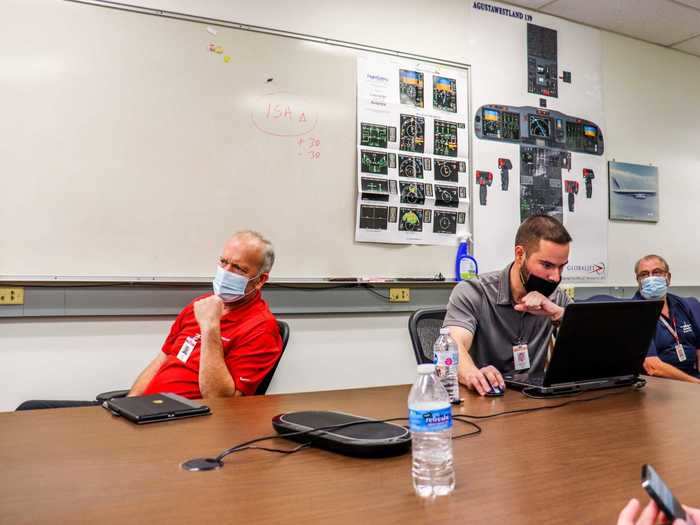
Flying on Honeywell Aerospace's Boeing 757 testbed aircraft.
Thomas Pallini/Insider
Also being tested on the aircraft was Honeywell's single-antenna radar altimeter, a simplified radar antenna system meant to improve accuracy and reduce costs for airlines and aircraft operators.
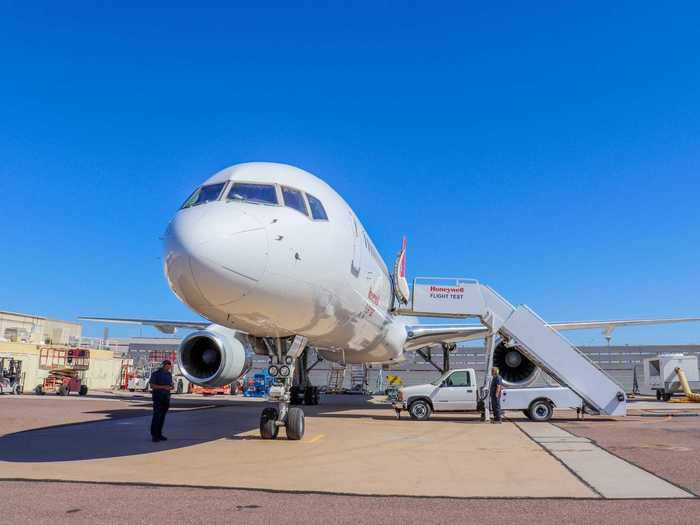
Flying on Honeywell Aerospace's Boeing 757 testbed aircraft.
Thomas Pallini/Insider
Stepping onto the plane, I quickly realized that this was unlike any Boeing 757, or any passenger airliner, that I've ever been on. Most of the passenger seats had been ripped out and many of the aircraft's panels removed.
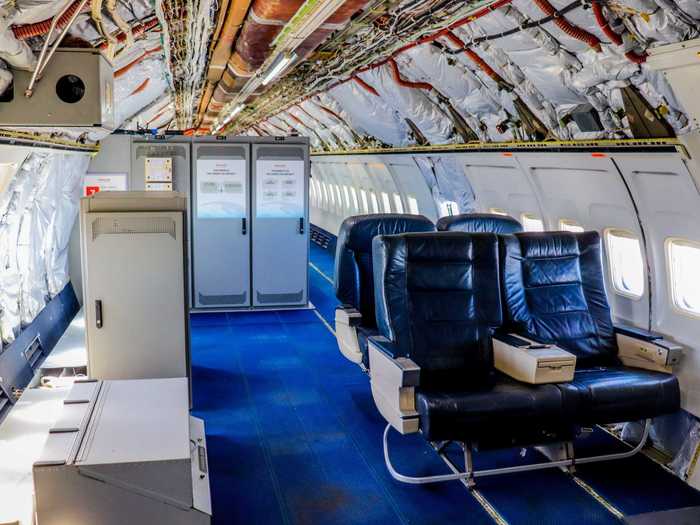
Flying on Honeywell Aerospace's Boeing 757 testbed aircraft.
Thomas Pallini/Insider
Massive computer testing stations replaced the passenger seats in order to collect data and monitor the onboard systems being tested.
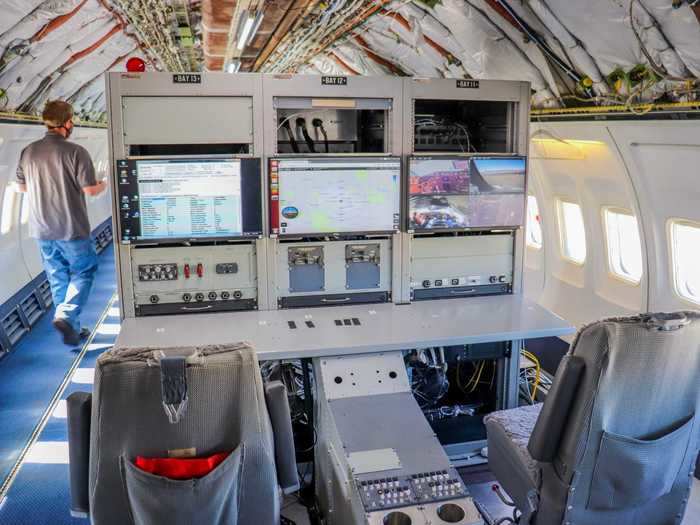
Flying on Honeywell Aerospace's Boeing 757 testbed aircraft.
Thomas Pallini/Insider
A light crew of only three engineers was on board for this test run.
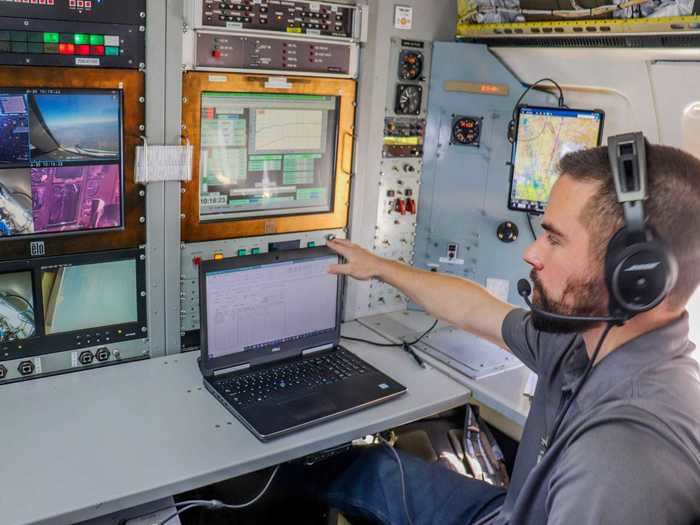
Flying on Honeywell Aerospace's Boeing 757 testbed aircraft.
Thomas Pallini/Insider
Captaining the aircraft was Joe Duval, Honeywell's chief test pilot, an industry veteran with thousands of hours in the cockpit.
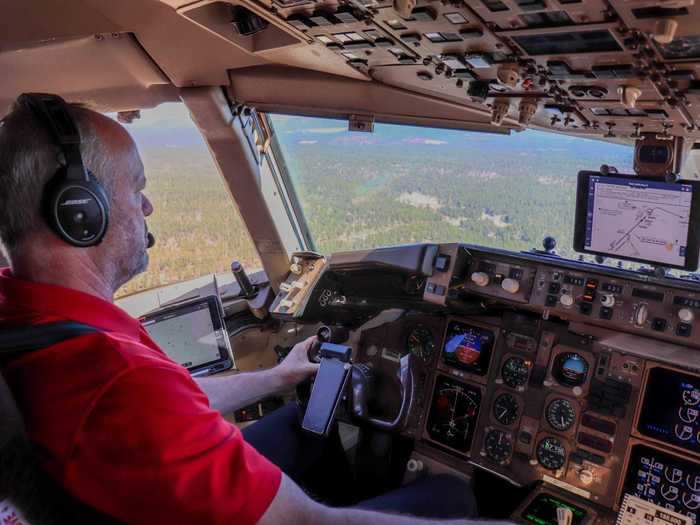
Flying on Honeywell Aerospace's Boeing 757 testbed aircraft.
Thomas Pallini/Insider
We departed Phoenix and headed north towards Flagstaff. Just off the left-hand side of the aircraft were the red rocks of Sedona, Arizona.
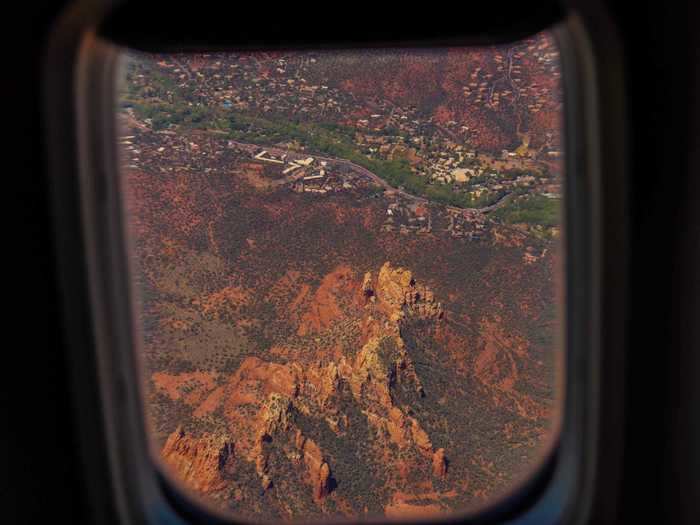
Flying on Honeywell Aerospace's Boeing 757 testbed aircraft.
Thomas Pallini/Insider
Flagstaff airport soon came into view and Duval planned his approach. The Honeywell flight team has a saying that they have to get really good and bad landings to test these kinds of systems.
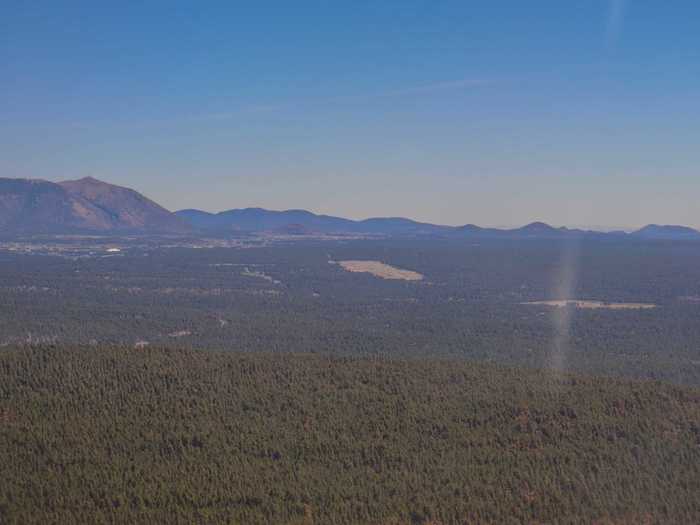
Flying on Honeywell Aerospace's Boeing 757 testbed aircraft.
Thomas Pallini/Insider
"Approaching 03," the system informed Duval a few miles from the runway's threshold. This simple warning alone could've prevented the Air Canada incident before it even became an incident.
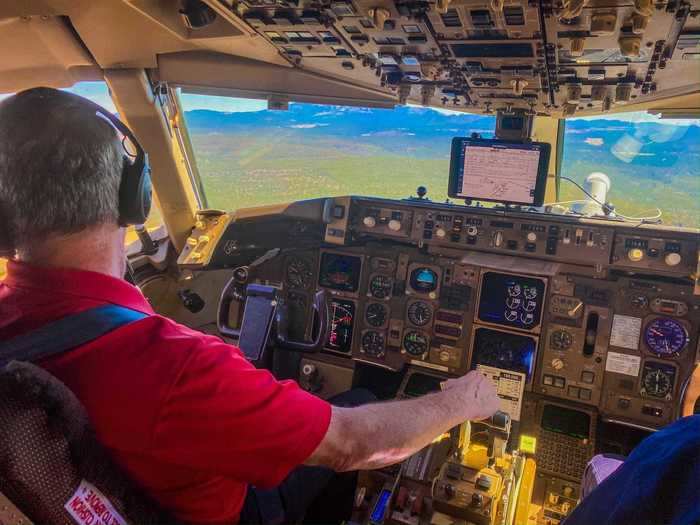
Flying on Honeywell Aerospace's Boeing 757 testbed aircraft.
Thomas Pallini/Insider
Duval continued approaching the runway with a higher than normal rate of speed. "Too fast, too fast," the system warned as Duval neared the runway.
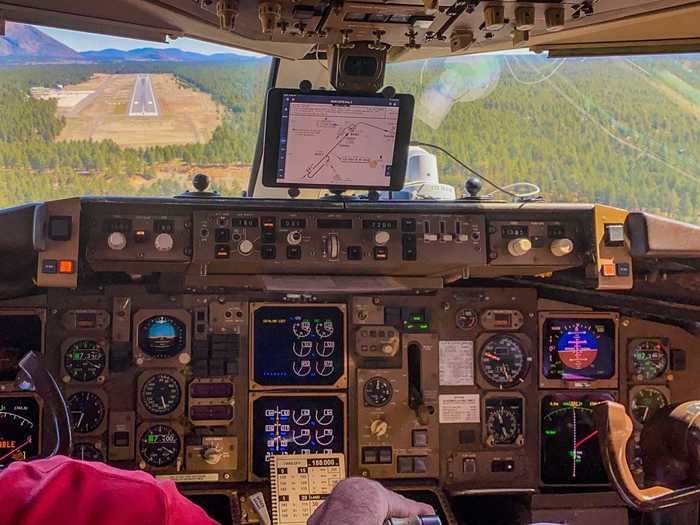
Flying on Honeywell Aerospace's Boeing 757 testbed aircraft.
Thomas Pallini/Insider
Once it became clear there was no way to land safely, the message "unstable, unstable" came from the system. A pilot, at that point, would know to abandon the approach or risk damage to the aircraft.

Flying on Honeywell Aerospace's Boeing 757 testbed aircraft.
Thomas Pallini/Insider
Duval increased the thrust and discontinued the approach, performing a "go-around" maneuver.
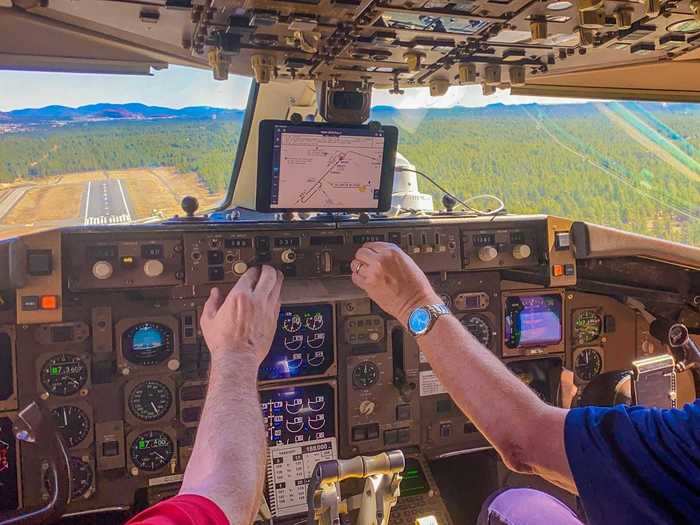
Flying on Honeywell Aerospace's Boeing 757 testbed aircraft.
Thomas Pallini/Insider
The second approach simulated landing at a high speed with no flaps. We approached the runway again but this time, the system warned "flaps, flaps!" in tandem with a message on the primary flight display.
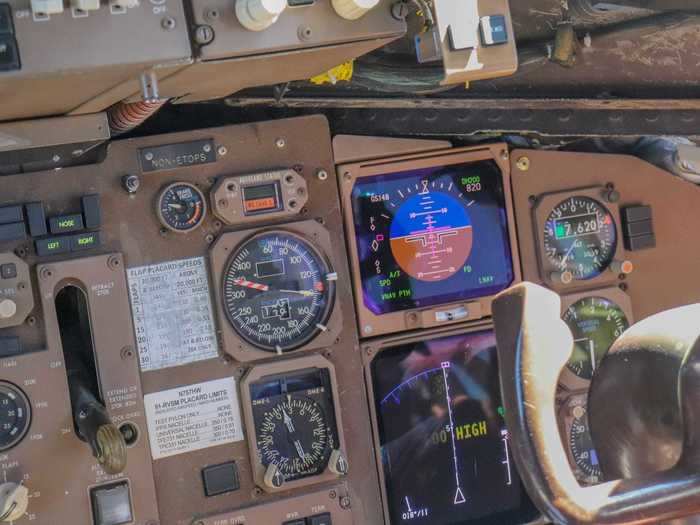
Flying on Honeywell Aerospace's Boeing 757 testbed aircraft.
Thomas Pallini/Insider
Duval continued the approach, however, to continue to test the system. Once more, the system gave its final "unstable, unstable" and Duval performed the go-around maneuvers.
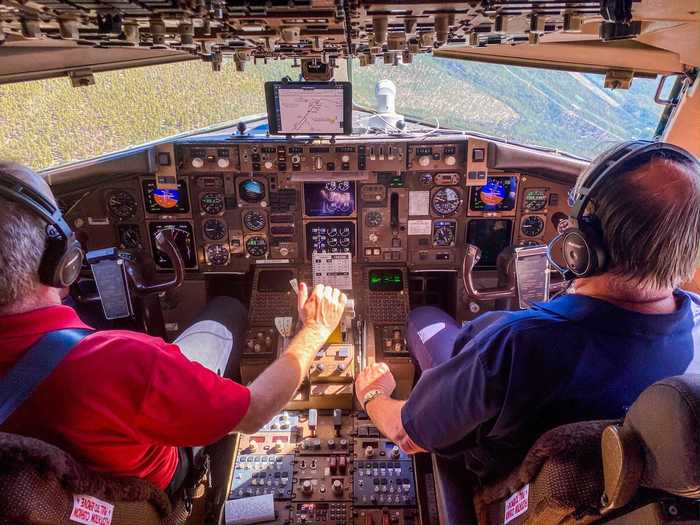
Flying on Honeywell Aerospace's Boeing 757 testbed aircraft.
Thomas Pallini/Insider
For the final approach into Flagstaff, Duval performed the approach at a higher altitude than normal.
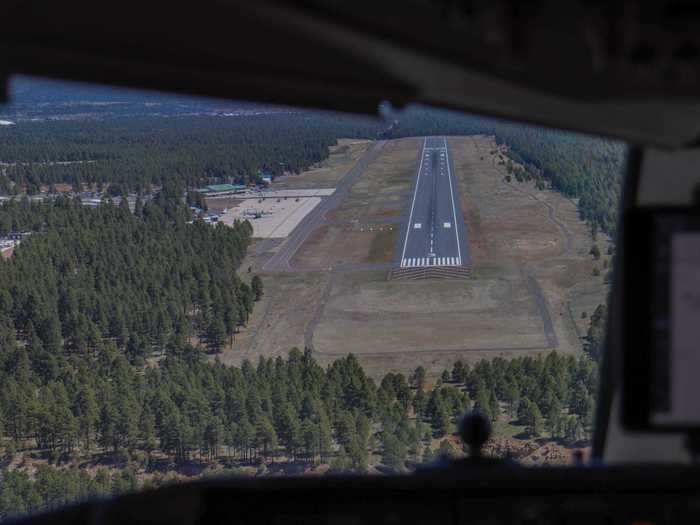
Flying on Honeywell Aerospace's Boeing 757 testbed aircraft.
Thomas Pallini/Insider
This time, the system warned "too high, too high," and a message flashed on the primary flight display. Being too high on the approach could mean landing further down on the runway and possibly overshooting it.
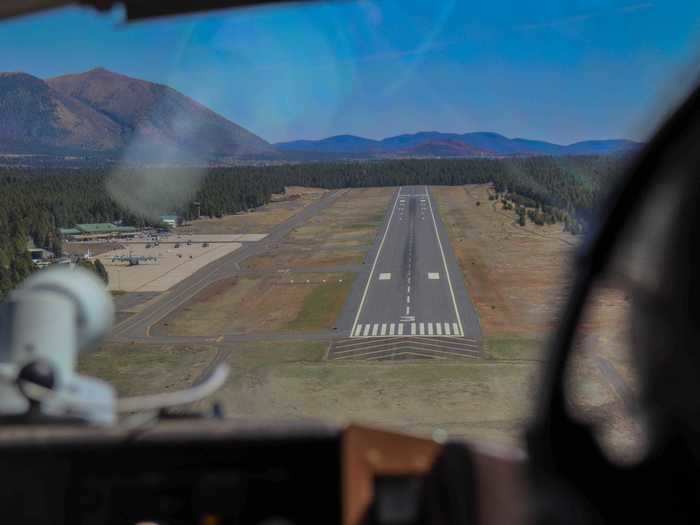
Flying on Honeywell Aerospace's Boeing 757 testbed aircraft.
Thomas Pallini/Insider
Duval once more abandoned the approach and performing a go-around.

Flying on Honeywell Aerospace's Boeing 757 testbed aircraft.
Thomas Pallini/Insider
Next on the list was Prescott, where Duval would simulate landing on a runway too short for his Boeing 757.
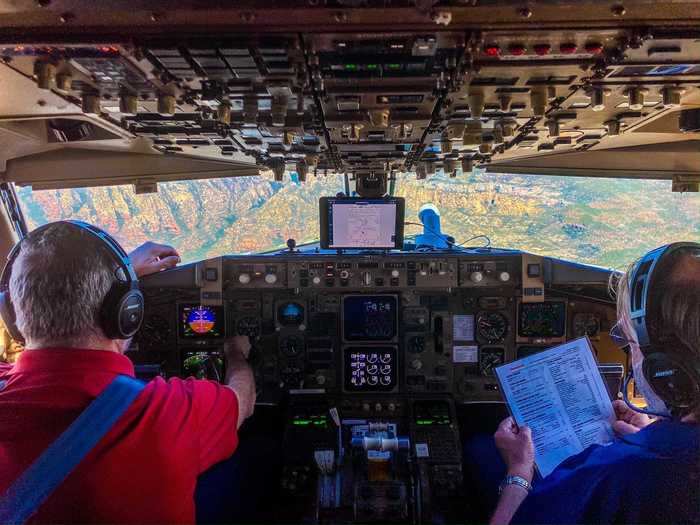
Flying on Honeywell Aerospace's Boeing 757 testbed aircraft.
Thomas Pallini/Insider
Approaching Runway 21R, it was immediately clear to all that the Boeing 757 could not handle the runway. But pilots can get confused at nighttime or in bad weather conditions.
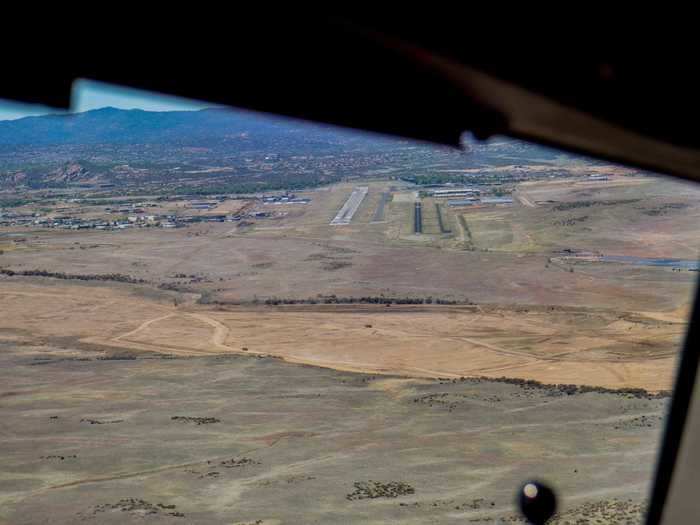
Flying on Honeywell Aerospace's Boeing 757 testbed aircraft.
Thomas Pallini/Insider
Knowing that the runway was shorter than normal, the system informed Duval that the amount of runway available was only 4,846 feet long.
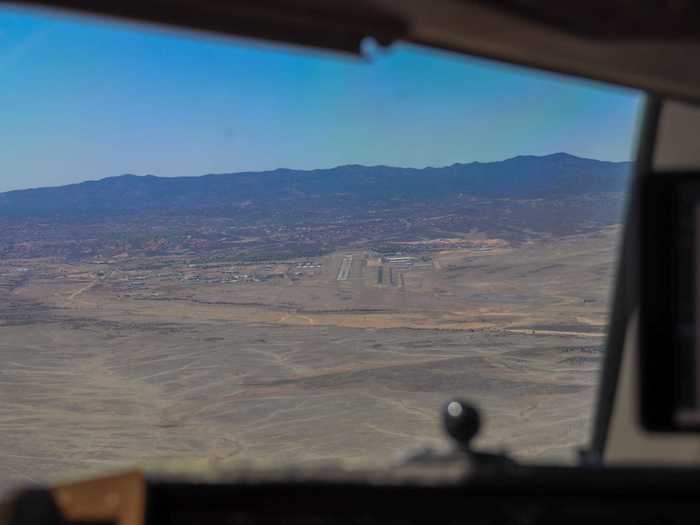
Flying on Honeywell Aerospace's Boeing 757 testbed aircraft.
Thomas Pallini/Insider
"Caution, short runway, short runway!" the system blared as Duval intentionally lined up for Runway 21R.
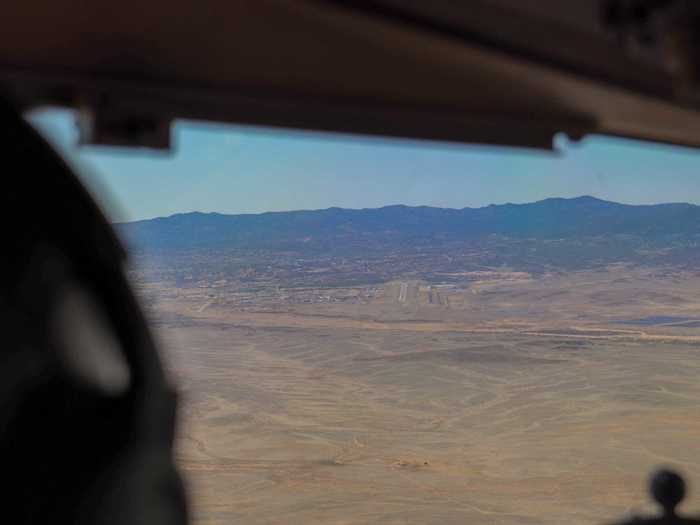
Flying on Honeywell Aerospace's Boeing 757 testbed aircraft.
Thomas Pallini/Insider
Soon after, "too fast, too fast" and "unstable, unstable" warnings blared and Duval once more increased the throttle for a go-around.
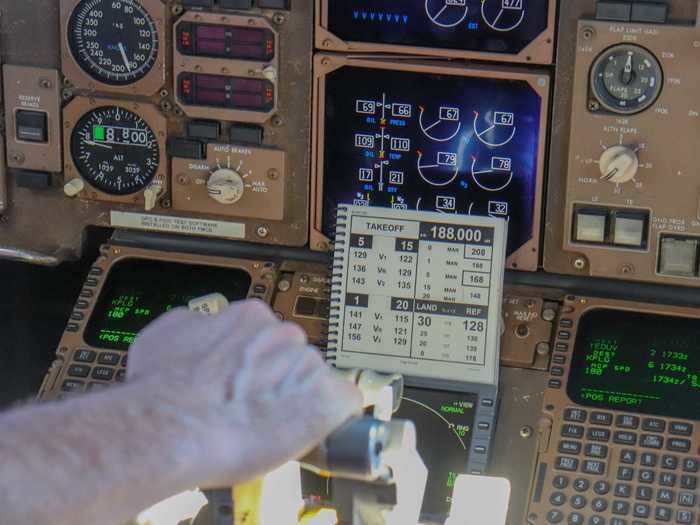
Flying on Honeywell Aerospace's Boeing 757 testbed aircraft.
Thomas Pallini/Insider
If he'd actually set it down on the runway, it's questionable whether the aircraft would have been able to stop before reaching the other end. This Boeing 757 definitely would not have been able to take off from the runway in the event of an accidental landing.
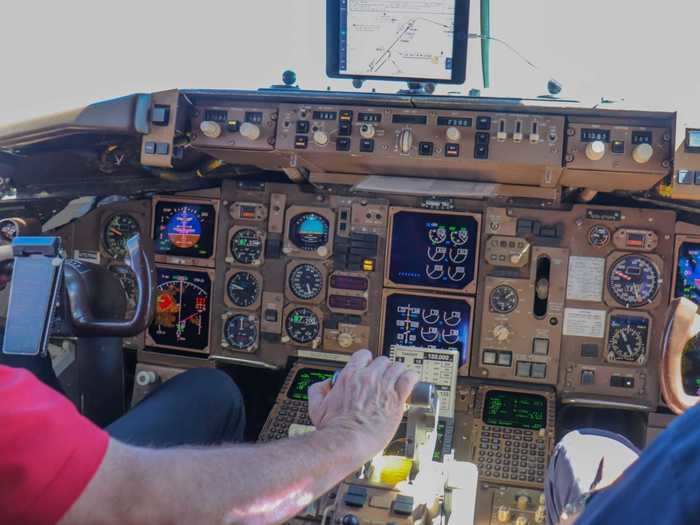
Flying on Honeywell Aerospace's Boeing 757 testbed aircraft.
Thomas Pallini/Insider
A similar incident occurred in 2013 when a Boeing 747-400LCF Dreamlifter accidentally landed at Colonel James Jabara Airport in Wichita, Kansas instead of McConnell Air Force Base.
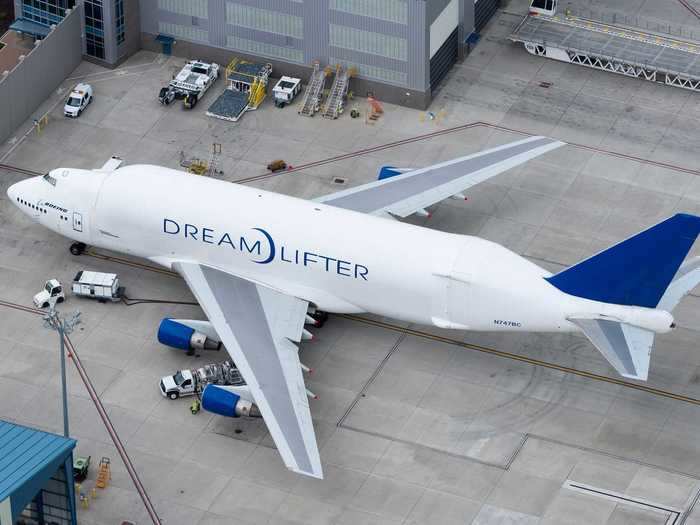
Thiago B Trevisan / Shutterstock.com
And while Duval was having fun in the cockpit, engineers in the back were collecting data on the Smart Landing and Smart Runway system, as well as the single radar altimeter system.
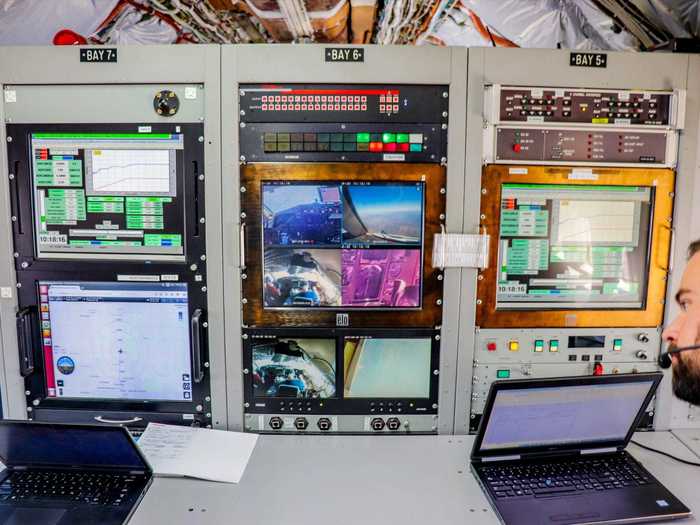
Flying on Honeywell Aerospace's Boeing 757 testbed aircraft.
Thomas Pallini/Insider
Back on the ground in Phoenix, Honeywell maintains a veritable airline full of test aircraft.
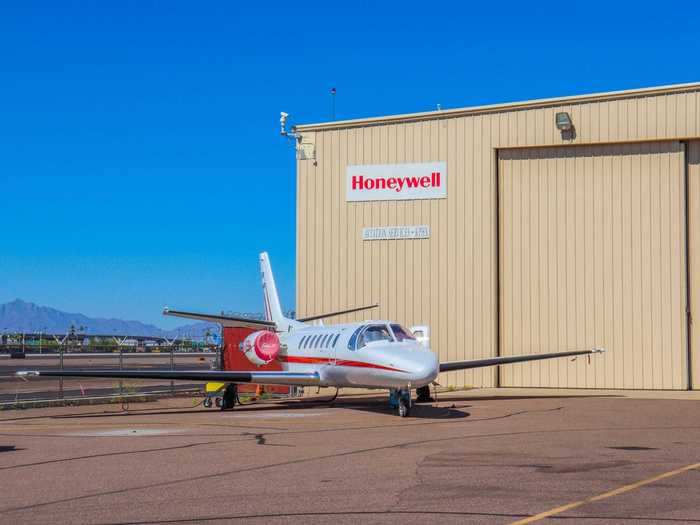
Flying on Honeywell Aerospace's Boeing 757 testbed aircraft.
Thomas Pallini/Insider
The newest arrival is a Gulfstream G550 painted in Honeywell's red-and-white livery. Honeywell and Gulfstream frequently team up for innovative cockpit designs, including the Symmetry cockpit powered by Honeywell's Primus Epic avionics.
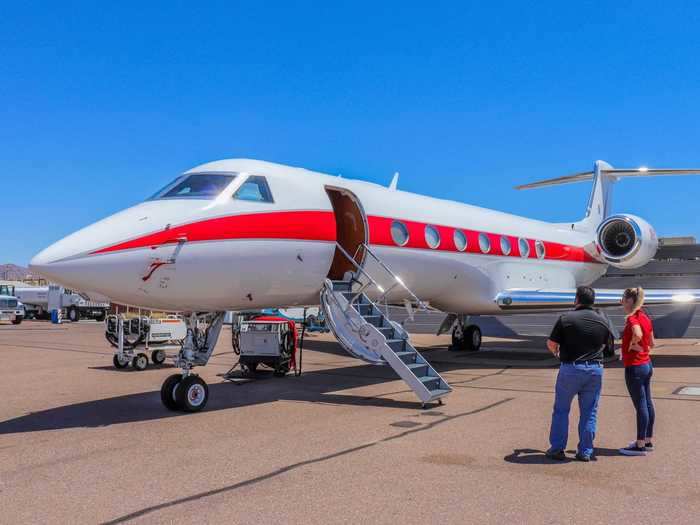
Flying on Honeywell Aerospace's Boeing 757 testbed aircraft.
Thomas Pallini/Insider
Other aircraft include an Embraer E175…
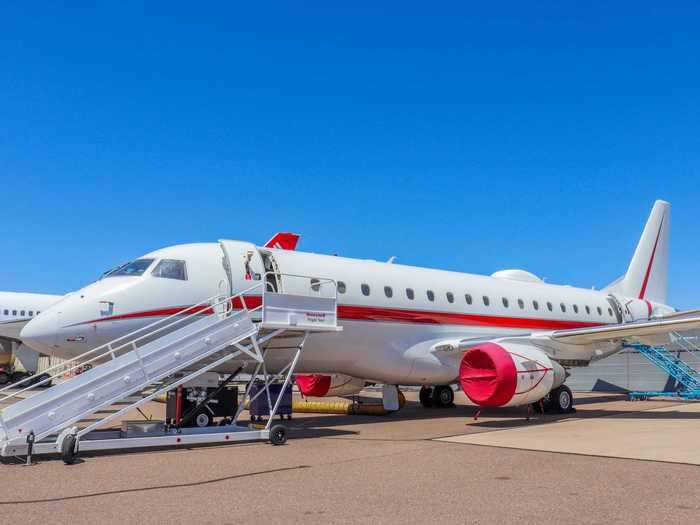
Flying on Honeywell Aerospace's Boeing 757 testbed aircraft.
Thomas Pallini/Insider
Cessna Citation…
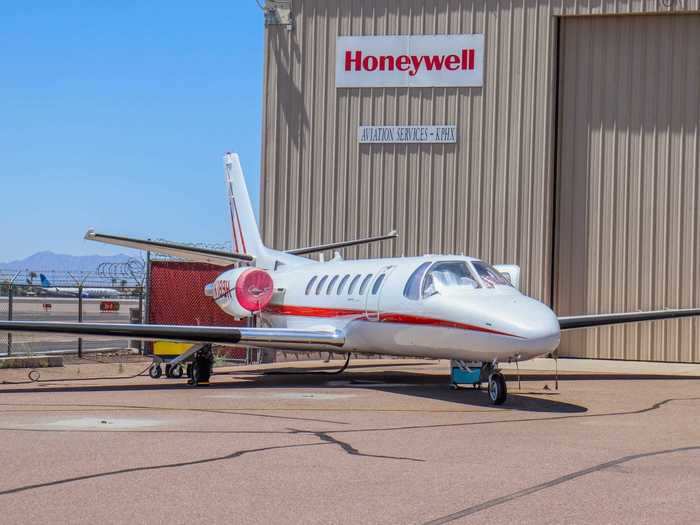
Flying on Honeywell Aerospace's Boeing 757 testbed aircraft.
Thomas Pallini/Insider
Pilatus PC-12...
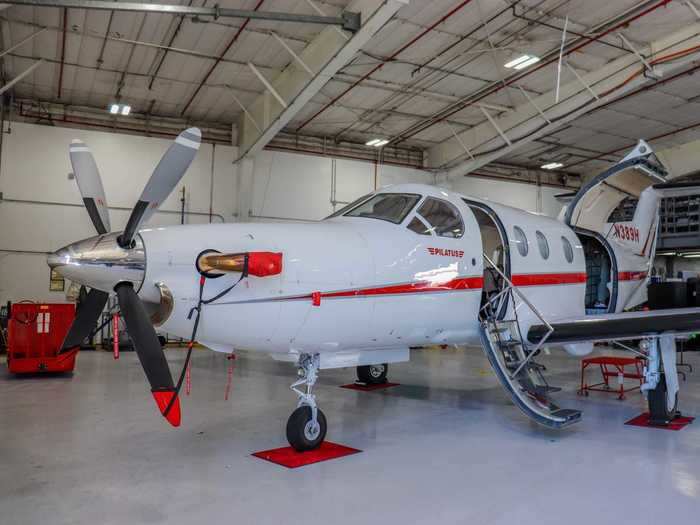
Flying on Honeywell Aerospace's Boeing 757 testbed aircraft.
Thomas Pallini/Insider
Beechcraft King Air 200…
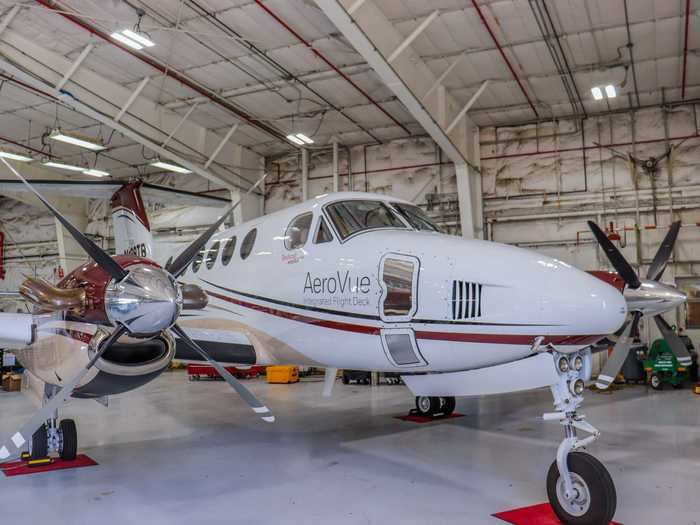
Flying on Honeywell Aerospace's Boeing 757 testbed aircraft.
Thomas Pallini/Insider
And Falcon 900EX, to name a few.
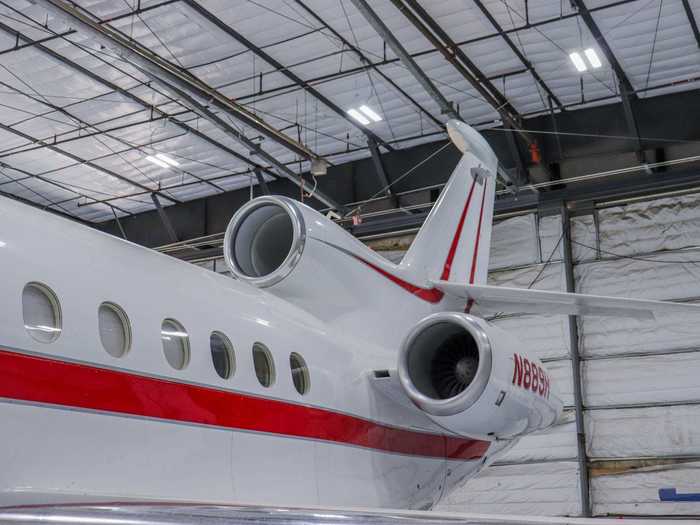
Flying on Honeywell Aerospace's Boeing 757 testbed aircraft.
Thomas Pallini/Insider
They'll all test the next-generation of aircraft technology but the Boeing 757 is the only aircraft large enough to test engines.
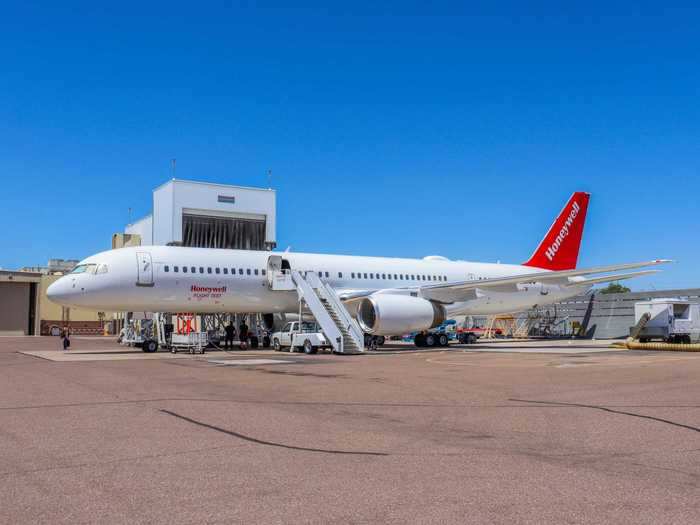
Flying on Honeywell Aerospace's Boeing 757 testbed aircraft.
Thomas Pallini/Insider
READ MORE ARTICLES ON
Popular Right Now
Advertisement